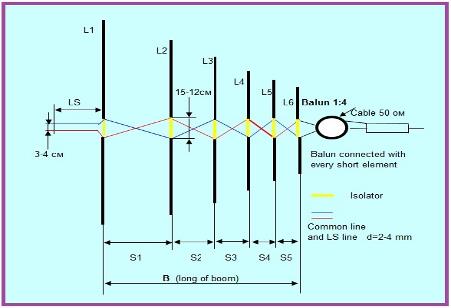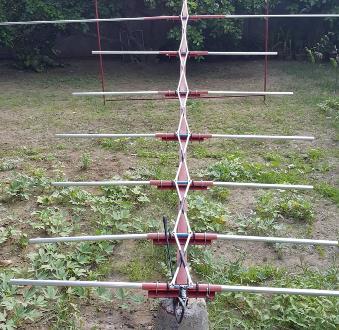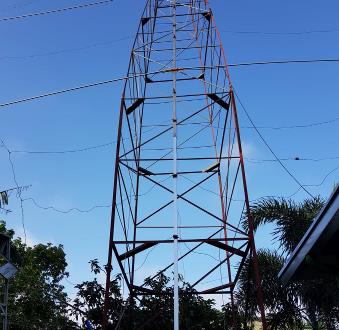|
My Activities |

|
Contests |
|
Photo Gallery |
|
My Biking Pictures |
|
Gain, Directivity, and 8 Band coverage! |
|
Low cost, Big rewards. |

|
The Log-Periodic Array antenna was invented by Dwight Isbell and Raymond DuHamel at the University of Illinois in 1958. It has of a series of half wave dipole elements much like a Yagi-Uda antenna but with a main difference that each element is driven, meaning that every individual element is connected to the feedline. RU3UJ, Roman L. Tarshish has made available a superb program for designing an LPDA for any variation of HF frequency and boom length. You input the low frequency, high frequency, number of elements and boom length and out comes the design based on your inputs. You can manipulate your numbers to come out with a gain figure that you deem satisfactory. |



|
I have made several of these and used them to snag DX very productively. Oriented towards the target, that station will be stronger than on a dipole of similar height. The first one I constructed was made of aluminum on a 20 foot boom that covered 20-10M. The second was of wire with PVC tubing at both ends to help maintain its physical form, frequency capability was still 14-28 MHz. Both have been destroyed by typhoons. Undaunted, I set out to make a bigger and hopefully stronger one. This time the band scope would be 40-10M or 7-28 MHz, boom length of 40 feet and with 9 elements. To keep the windload low, I made it a hybrid of the two previous versions, three elements would be aluminum and the rest of wire.
|
|
Taking all of two months to build and three days to install, it saw first action on February 20, 2019 and its performance has been simply amazing. Well, tons better than the Inverted-L I had been using after Typhoon Ompong utterly destroyed the wire version last September 2018. It is steerable, has gain and covers more bands without the need for a tuner. I have come up on the bands with more confidence on snagging DX. 6M with the LDG tuner is a cinch also. It has been a more enjoyable experience to fill up the logbook with ease. Loading it up with power, about 1 Kw, has not hurt it and SWR is stable as is directivity. Lessons for when building the next one? Definitely. The next one will be more robust as it will employ better materials. This one cost only about P7,000 and works like a champ. If not for the new band mode and band countries, then proving that homebrewing can come up with a winner has certainly made this build a worthwhile effort. |


